Just in time for the Holiday season, Solarbotics is now able to accept PayPal payments through our web site. When you view your cart, you will now see the option to either make your purchase the usual method using your MasterCard or Visa, or the new option of proceeding with PayPal. Check the help page […]
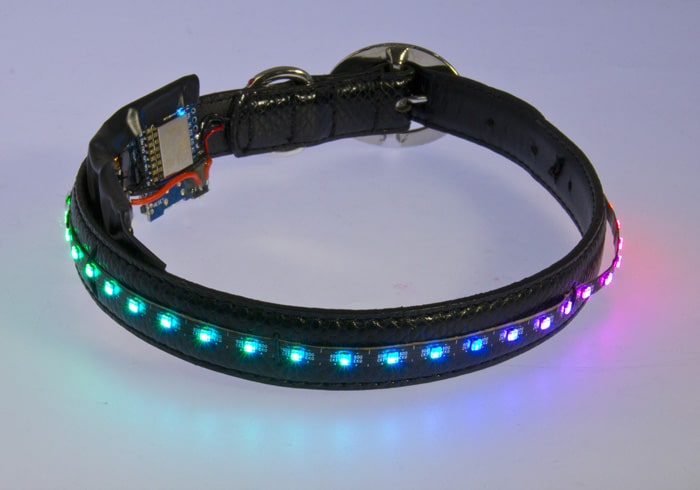
APA102-2020 MicroNova Custom LED Choker
I created this choker as a project to demonstrate the new MicroNova APA102-2020 LED strips.

Photo by Yeti, edited by Batgirl
These addressable LEDs are extremely small, less than 1/4 the size of a standard 5050 LED.
This project was built using engineering sample standard MicroNova 99 LED / meter strips . The MicroNova strips we are selling have 198/meter - twice the density!
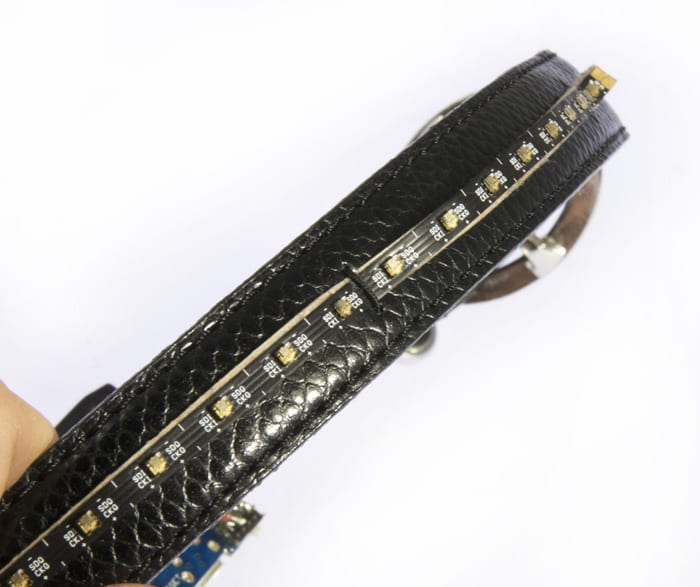
Reason for a Choker necklace:
Hats have been done, shoes have been done, pendants have been done. This is something new for a Valentine’s dance costume, so I decided to go with a choker design. I also wanted something that was interactive, something that would add another layer of WOW to just lighting.
The Build:
I used a Wemos D1 Mini development board along with a boost-converting battery shield for the Wemos D1.

The battery shield was a particularly good choice here because the MicroNova LEDs should be supplied a solid 5VDC. This board boosts the battery voltage to 5V, and then the Wemos D1 Mini bucks it down to 3V3 for it's own operation.
A mini SPDT Slide switch toggles the power from the battery shield to the D1. This allows charging the battery using the battery shield USB connector while not powering the D1.
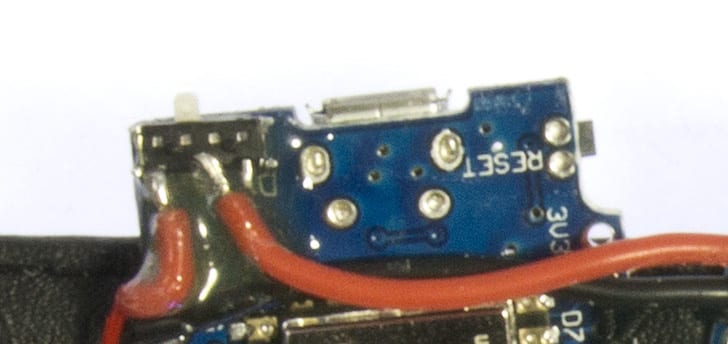
Epoxy locks the switch and wires in place.
The battery used is a conveniently handy older 450mAh Lithium Polymer. Depending on the lighting mode, this battery can power the necklace for a couple of hours.
I used elastic thread to attach the LED strip and components to the necklace. A heavy duty needle was all that was needed to punch through the (imitation) leather belt. Because the thread was elastic and tied under tension, it held the MicroNova strip well in place.
Operation:

When the choker powers up, it creates a WiFi Access Point called "HeartBurnChoker1".
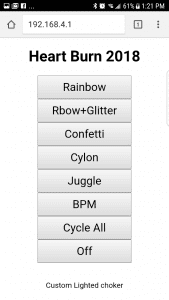
Once I connected to this WiFi, I opened a browser and went to 192.168.4.1. The control interface is simple, but effective. The D1 Mini has more than ample power and speed to effectively drive these LEDs. The MicroNova features separate clock & data lines, so even relatively slow I/O (like Raspberry Pi) can still make it work.
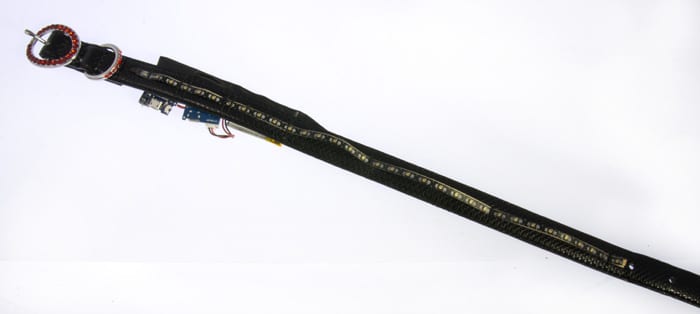
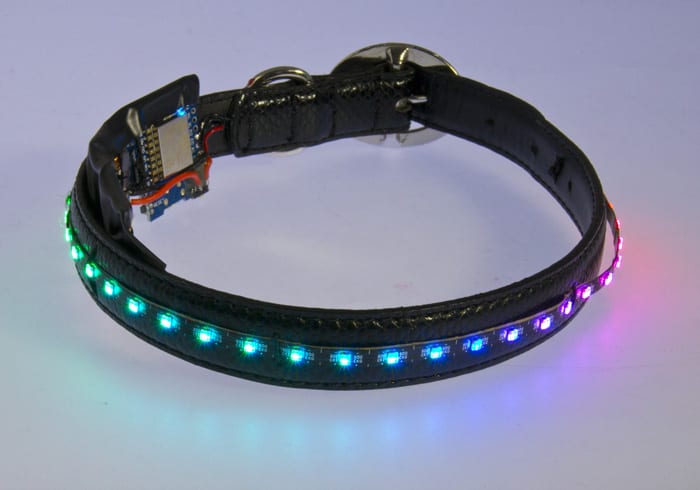
Video of the Collar in Action
MORE POSTS
Today we have two superstars - the Kossel Pro 3D Printer and the SketchBoard. Both are relatively new add-ons to the Solarbotics website. Initially created as a Kickstarter project and designed around the OpenBeam aluminum extrusion system, Kossel Pro is now available for purchase. It comes with a spool of 1.75mm PLA filament (random color) […]
3D printer Using Smartphone Light The creators claim this is the first of its kind, high-resolution portable 3D printer. Interesting idea. (Via Designboom) Tiny Picobug It is adorable and multi-modal - it is capable of flying, crawling and grabbing. (Via IEEE Spectrum) Illuminated Bluetooth Speaker A combination of white oak and LED-illuminated acrylic makes this […]
I can't imagine why, but some people want to use these push pogo pins for other uses than robot appendages. Or battery contacts. Apparently they're really good for something called "JTAG applications" too, but I'll leave that up to you to decide. Scroll down to see them listed in the "New Items" column.
Solarbotics, Ltd. is not responsible for misprints or errors on product prices or information. For more information, please see our Terms and Conditions.
Warning: This product contains chemicals known to the State of California to cause cancer and birth defects or other reproductive harm.
Please visit www.P65Warnings.ca.gov for more information. This item was manufactured prior to August 31, 2018.

